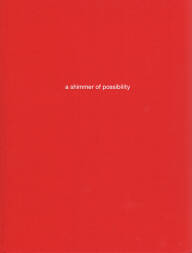Memorabilia (signed - last copy)
by Gabor Arion Kudasz
Photographs: Gabor Arion Kudasz and anonymous sources
Text: Gabriella Uhl (foreword), Gábor Arion Kudász, Emese Kudász
Publisher: Hungarian House of Photography
184 pages
Pictures: 150
Year: 2014
ISBN: 978-963-88529-7-7
Comments: first edition of 300 copies, 20x28cm (includes a 100x70cm poster), soft cover, sewn, Book design: Nóra Demeczky, Binding: Előzék. Slightly used because of the fragility of the book and the cover. Small spot on the paper (coverside)
MEMORABILIA 2010-2014 / Painter Emese Kudász died on 22 November, 2010. In the years that followed, her son Gábor Arion Kudász catalogued her entire estate, so as to establish a guide to the workings of memory. The artistic research disrupted the order she had created, something that surrounded her and was distinctively her own. Through the cracks of this disrupted order, hidden aspects of her personality emerged, together with a previously unrealised coherence among her objects; it is no longer possible to tell whether these had existed before or were only the result of the intervention. The structure of the estate itself encouraged the creation of collections as it comprises very individual, occasionally downright extravagant, corpuses forming the backbone of this exhibition and the accompanying book: hundreds of four-leaved clovers pressed between newspaper, wardrobe items kept by seasons and colours, bookshelves, printing blocks of an aged catalogue and endless personal objects, messages from the grave.
The title Memorabilia has an atmosphere more befitting the environment of a classic collection that is evoked by the idea of the inventory book. Its closest kin is the museum inventory, which follows traditional rules in describing, cataloguing and classifying objects. The collection whose inventorying is carried out here has all the resemblance of a curiosity cabinet (wunderkammer or kunstkammer), a form of collection that emerged during the Renaissance and was popular from the 16th to the 18th century. It was common, particularly for aristocratic and big bourgeois families, to dedicate a room or cabinet to things worthy of collection. Representing all and any fields of science, art and life, these assemblages were as likely to feature minerals and miniatures as clever contraptions and book rarities. These curiosity cabinets were home to scientific concepts about the world, the experience of the past, and inferences that could be drawn from objects. Such a collection had personal motivations and faithfully represented the worldview of its owner, as was evident in the act of classification. It was an instrument of inventorying, of interpretation, though not yet in its encyclopaedic form, but in a playful variety.
The order of things according to Memorabilia
a) Personal effects, mostly personal items that bear the warmth of the significant person’s hand, keep her scent, their surface was worn by her gaze. On their own, these objects are often without value and interest; they are not even individual, do not directly refer to their owner — yet an assemblage of mementoes of this kind makes the taste, habits, lifestyle and spirit of the subject of remembrance recognizable.
b) Things considered suitable to be tokens of remembrance, and marked as such. Both the rememberer and the subject of remembrance have agreed to elevate them above similar objects.
c) Real memorabilia, objects for remembrance, mementoes. Articles produced in multiple copies with the express function of serving as triggers of memory, which can be identified with the subject of memory only through an image or name.
More books by Gabor Arion Kudasz
-
Human (signed - English edition - last copy)
by Gabor Arion Kudasz
sold out -
Human (signed - French edition - last copies)
by Gabor Arion Kudasz
sold out -
Human (signed - Hungarian edition - last copy)
by Gabor Arion Kudasz
sold out -
Human (signed - German edition - last copy)
by Gabor Arion Kudasz
sold out -
HUMAN (signed)
by Gabor Arion Kudasz
Euro 38.50 -
Tropical Depression (signed)
by Gabor Arion Kudasz
Euro 46 -
Tropical Depression (signed, book+print)
by Gabor Arion Kudasz
Euro 148
more books tagged »objects« | >> see all
-
Resurrected (signed)
by Roger Ballen
Euro 44 -
Poem as an Object # 4 (signed)
by Wypke Jannette Walen
Euro 17.50 -
Museum. 55 Lichtbilder von André Köhler
by André Köhler
sold out -
Hong Kong Assemblage Deconstructed (signed - last copy)
by Michael Wolf
sold out -
Glanage
by Naohiro Ninomiya
Euro 118 -
The House Project (signed - last copy)
by Roger Ballen
Euro 165
more books tagged »Hungarian« | >> see all
-
not far - special edition (signed+print+2booklets - last copy)
by Ildi Hermann
Euro 220 -
Bachelorettes
by Szabó Benke Róbert
Euro 25 12.50 -
The Sundays of Life (signed - review copy)
by Bela Doka
Euro 88 61.60 -
Light years, or silhouettes with light-cycle
by Minψó Szert
Euro 20 -
not far - special edition (signed+print+1booklet)
by Ildi Hermann
sold out -
Porcelain and Wool (signed)
by Kincso Bede
Euro 62
more books tagged »black and white« | >> see all
-
BRUTAL (signed - last copy)
by Michal Luczak
sold out -
Swell (last copy)
by Mateusz Sarello
sold out -
Economopoulos, photographer
by Nikos Economopoulos
sold out -
Spasibo
by Davide Monteleone
Euro 58 -
Unleashed Two (signed)
by Josef Hoflehner
sold out -
The Home Front
by Kenneth Graves
Euro 33
more books tagged »archive« | >> see all
-
Amc2 journal Issue 8 (signed - last copy)
by Thomas Sauvin
sold out -
Schönheit im Olympischen Kampf
by Leni Riefenstahl
Euro 2200 -
The History of European Photography 1939-1969
by various photographers
Euro 108.90 -
Shvilishvili (signed + print)
by Jana Romanova
Euro 800 -
Until Death Do Us Part
by Thomas Sauvin
sold out -
Révélations. Iconographie de La Salpêtrière. Paris 1875-1918
by Javier Viver
sold out
Random selection from the Virtual bookshelf josefchladek.com
Memorabilia (signed - last copy)
by Gabor Arion Kudasz
Photographs: Gabor Arion Kudasz and anonymous sources
Text: Gabriella Uhl (foreword), Gábor Arion Kudász, Emese Kudász
Publisher: Hungarian House of Photography
184 pages
Pictures: 150
Year: 2014
ISBN: 978-963-88529-7-7
Comments: first edition of 300 copies, 20x28cm (includes a 100x70cm poster), soft cover, sewn, Book design: Nóra Demeczky, Binding: Előzék. Slightly used because of the fragility of the book and the cover. Small spot on the paper (coverside)
MEMORABILIA 2010-2014 / Painter Emese Kudász died on 22 November, 2010. In the years that followed, her son Gábor Arion Kudász catalogued her entire estate, so as to establish a guide to the workings of memory. The artistic research disrupted the order she had created, something that surrounded her and was distinctively her own. Through the cracks of this disrupted order, hidden aspects of her personality emerged, together with a previously unrealised coherence among her objects; it is no longer possible to tell whether these had existed before or were only the result of the intervention. The structure of the estate itself encouraged the creation of collections as it comprises very individual, occasionally downright extravagant, corpuses forming the backbone of this exhibition and the accompanying book: hundreds of four-leaved clovers pressed between newspaper, wardrobe items kept by seasons and colours, bookshelves, printing blocks of an aged catalogue and endless personal objects, messages from the grave.
The title Memorabilia has an atmosphere more befitting the environment of a classic collection that is evoked by the idea of the inventory book. Its closest kin is the museum inventory, which follows traditional rules in describing, cataloguing and classifying objects. The collection whose inventorying is carried out here has all the resemblance of a curiosity cabinet (wunderkammer or kunstkammer), a form of collection that emerged during the Renaissance and was popular from the 16th to the 18th century. It was common, particularly for aristocratic and big bourgeois families, to dedicate a room or cabinet to things worthy of collection. Representing all and any fields of science, art and life, these assemblages were as likely to feature minerals and miniatures as clever contraptions and book rarities. These curiosity cabinets were home to scientific concepts about the world, the experience of the past, and inferences that could be drawn from objects. Such a collection had personal motivations and faithfully represented the worldview of its owner, as was evident in the act of classification. It was an instrument of inventorying, of interpretation, though not yet in its encyclopaedic form, but in a playful variety.
The order of things according to Memorabilia
a) Personal effects, mostly personal items that bear the warmth of the significant person’s hand, keep her scent, their surface was worn by her gaze. On their own, these objects are often without value and interest; they are not even individual, do not directly refer to their owner — yet an assemblage of mementoes of this kind makes the taste, habits, lifestyle and spirit of the subject of remembrance recognizable.
b) Things considered suitable to be tokens of remembrance, and marked as such. Both the rememberer and the subject of remembrance have agreed to elevate them above similar objects.
c) Real memorabilia, objects for remembrance, mementoes. Articles produced in multiple copies with the express function of serving as triggers of memory, which can be identified with the subject of memory only through an image or name.
More books by Gabor Arion Kudasz
-
Human (signed - English edition - last copy)
by Gabor Arion Kudasz
sold out -
Human (signed - French edition - last copies)
by Gabor Arion Kudasz
sold out -
Human (signed - Hungarian edition - last copy)
by Gabor Arion Kudasz
sold out -
Human (signed - German edition - last copy)
by Gabor Arion Kudasz
sold out -
HUMAN (signed)
by Gabor Arion Kudasz
Euro 38.50 -
Tropical Depression (signed)
by Gabor Arion Kudasz
Euro 46 -
Tropical Depression (signed, book+print)
by Gabor Arion Kudasz
Euro 148
more books tagged »objects« | >> see all
-
Resurrected (signed)
by Roger Ballen
Euro 44 -
Poem as an Object # 4 (signed)
by Wypke Jannette Walen
Euro 17.50 -
Museum. 55 Lichtbilder von André Köhler
by André Köhler
sold out -
Hong Kong Assemblage Deconstructed (signed - last copy)
by Michael Wolf
sold out -
Glanage
by Naohiro Ninomiya
Euro 118 -
The House Project (signed - last copy)
by Roger Ballen
Euro 165
more books tagged »Hungarian« | >> see all
-
not far - special edition (signed+print+2booklets - last copy)
by Ildi Hermann
Euro 220 -
Bachelorettes
by Szabó Benke Róbert
Euro 25 12.50 -
The Sundays of Life (signed - review copy)
by Bela Doka
Euro 88 61.60 -
Light years, or silhouettes with light-cycle
by Minψó Szert
Euro 20 -
not far - special edition (signed+print+1booklet)
by Ildi Hermann
sold out -
Porcelain and Wool (signed)
by Kincso Bede
Euro 62
more books tagged »black and white« | >> see all
-
BRUTAL (signed - last copy)
by Michal Luczak
sold out -
Swell (last copy)
by Mateusz Sarello
sold out -
Economopoulos, photographer
by Nikos Economopoulos
sold out -
Spasibo
by Davide Monteleone
Euro 58 -
Unleashed Two (signed)
by Josef Hoflehner
sold out -
The Home Front
by Kenneth Graves
Euro 33
more books tagged »archive« | >> see all
-
Amc2 journal Issue 8 (signed - last copy)
by Thomas Sauvin
sold out -
Schönheit im Olympischen Kampf
by Leni Riefenstahl
Euro 2200 -
The History of European Photography 1939-1969
by various photographers
Euro 108.90 -
Shvilishvili (signed + print)
by Jana Romanova
Euro 800 -
Until Death Do Us Part
by Thomas Sauvin
sold out -
Révélations. Iconographie de La Salpêtrière. Paris 1875-1918
by Javier Viver
sold out
Random selection from the Virtual bookshelf josefchladek.com
Memorabilia (signed - last copy)
by Gabor Arion Kudasz
Photographs: Gabor Arion Kudasz and anonymous sources
Text: Gabriella Uhl (foreword), Gábor Arion Kudász, Emese Kudász
Publisher: Hungarian House of Photography
184 pages
Pictures: 150
Year: 2014
ISBN: 978-963-88529-7-7
Comments: first edition of 300 copies, 20x28cm (includes a 100x70cm poster), soft cover, sewn, Book design: Nóra Demeczky, Binding: Előzék. Slightly used because of the fragility of the book and the cover. Small spot on the paper (coverside)
MEMORABILIA 2010-2014 / Painter Emese Kudász died on 22 November, 2010. In the years that followed, her son Gábor Arion Kudász catalogued her entire estate, so as to establish a guide to the workings of memory. The artistic research disrupted the order she had created, something that surrounded her and was distinctively her own. Through the cracks of this disrupted order, hidden aspects of her personality emerged, together with a previously unrealised coherence among her objects; it is no longer possible to tell whether these had existed before or were only the result of the intervention. The structure of the estate itself encouraged the creation of collections as it comprises very individual, occasionally downright extravagant, corpuses forming the backbone of this exhibition and the accompanying book: hundreds of four-leaved clovers pressed between newspaper, wardrobe items kept by seasons and colours, bookshelves, printing blocks of an aged catalogue and endless personal objects, messages from the grave.
The title Memorabilia has an atmosphere more befitting the environment of a classic collection that is evoked by the idea of the inventory book. Its closest kin is the museum inventory, which follows traditional rules in describing, cataloguing and classifying objects. The collection whose inventorying is carried out here has all the resemblance of a curiosity cabinet (wunderkammer or kunstkammer), a form of collection that emerged during the Renaissance and was popular from the 16th to the 18th century. It was common, particularly for aristocratic and big bourgeois families, to dedicate a room or cabinet to things worthy of collection. Representing all and any fields of science, art and life, these assemblages were as likely to feature minerals and miniatures as clever contraptions and book rarities. These curiosity cabinets were home to scientific concepts about the world, the experience of the past, and inferences that could be drawn from objects. Such a collection had personal motivations and faithfully represented the worldview of its owner, as was evident in the act of classification. It was an instrument of inventorying, of interpretation, though not yet in its encyclopaedic form, but in a playful variety.
The order of things according to Memorabilia
a) Personal effects, mostly personal items that bear the warmth of the significant person’s hand, keep her scent, their surface was worn by her gaze. On their own, these objects are often without value and interest; they are not even individual, do not directly refer to their owner — yet an assemblage of mementoes of this kind makes the taste, habits, lifestyle and spirit of the subject of remembrance recognizable.
b) Things considered suitable to be tokens of remembrance, and marked as such. Both the rememberer and the subject of remembrance have agreed to elevate them above similar objects.
c) Real memorabilia, objects for remembrance, mementoes. Articles produced in multiple copies with the express function of serving as triggers of memory, which can be identified with the subject of memory only through an image or name.
More books by Gabor Arion Kudasz
-
Human (signed - English edition - last copy)
by Gabor Arion Kudasz
sold out -
Human (signed - French edition - last copies)
by Gabor Arion Kudasz
sold out -
Human (signed - Hungarian edition - last copy)
by Gabor Arion Kudasz
sold out -
Human (signed - German edition - last copy)
by Gabor Arion Kudasz
sold out -
HUMAN (signed)
by Gabor Arion Kudasz
Euro 38.50 -
Tropical Depression (signed)
by Gabor Arion Kudasz
Euro 46 -
Tropical Depression (signed, book+print)
by Gabor Arion Kudasz
Euro 148
more books tagged »objects« | >> see all
-
Resurrected (signed)
by Roger Ballen
Euro 44 -
Poem as an Object # 4 (signed)
by Wypke Jannette Walen
Euro 17.50 -
Museum. 55 Lichtbilder von André Köhler
by André Köhler
sold out -
Hong Kong Assemblage Deconstructed (signed - last copy)
by Michael Wolf
sold out -
Glanage
by Naohiro Ninomiya
Euro 118 -
The House Project (signed - last copy)
by Roger Ballen
Euro 165
more books tagged »Hungarian« | >> see all
-
not far - special edition (signed+print+2booklets - last copy)
by Ildi Hermann
Euro 220 -
Bachelorettes
by Szabó Benke Róbert
Euro 25 12.50 -
The Sundays of Life (signed - review copy)
by Bela Doka
Euro 88 61.60 -
Light years, or silhouettes with light-cycle
by Minψó Szert
Euro 20 -
not far - special edition (signed+print+1booklet)
by Ildi Hermann
sold out -
Porcelain and Wool (signed)
by Kincso Bede
Euro 62
more books tagged »black and white« | >> see all
-
BRUTAL (signed - last copy)
by Michal Luczak
sold out -
Swell (last copy)
by Mateusz Sarello
sold out -
Economopoulos, photographer
by Nikos Economopoulos
sold out -
Spasibo
by Davide Monteleone
Euro 58 -
Unleashed Two (signed)
by Josef Hoflehner
sold out -
The Home Front
by Kenneth Graves
Euro 33
more books tagged »archive« | >> see all
-
Amc2 journal Issue 8 (signed - last copy)
by Thomas Sauvin
sold out -
Schönheit im Olympischen Kampf
by Leni Riefenstahl
Euro 2200 -
The History of European Photography 1939-1969
by various photographers
Euro 108.90 -
Shvilishvili (signed + print)
by Jana Romanova
Euro 800 -
Until Death Do Us Part
by Thomas Sauvin
sold out -
Révélations. Iconographie de La Salpêtrière. Paris 1875-1918
by Javier Viver
sold out
Random selection from the Virtual bookshelf josefchladek.com

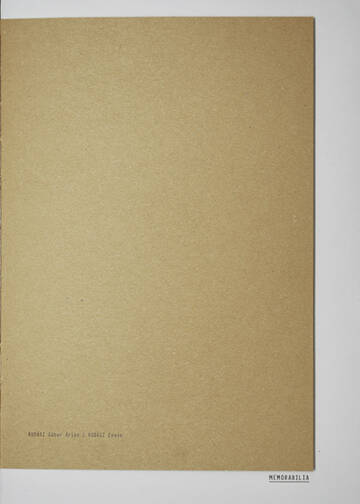






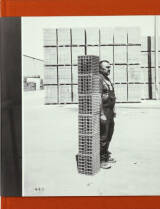






























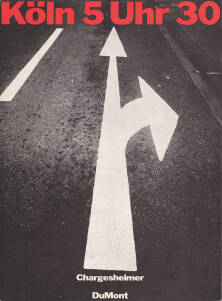
_;jpg?c=419d59e36ac6254ab2ee57eb072962ae)

_;jpg?c=70d3e1cb4e1f8d4fe0d9cbd819b7b4ec)

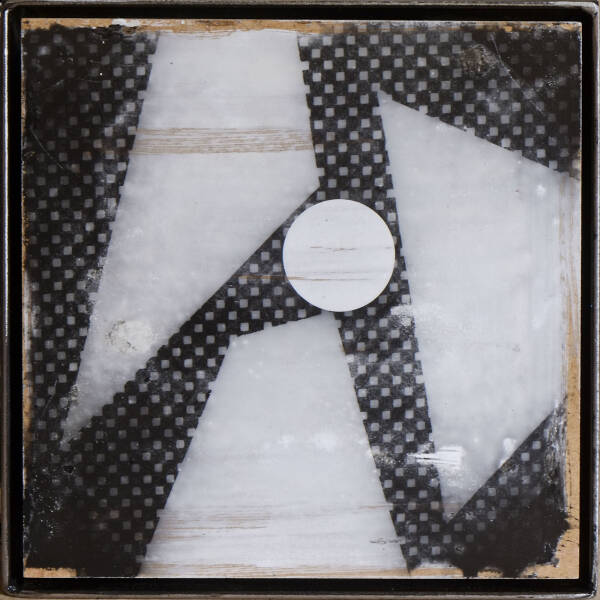


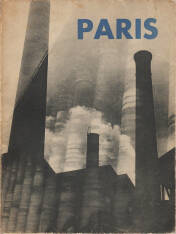
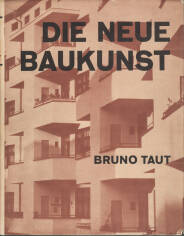
;jpg?c=4fa1cfaa828d521cbace11826b19985c)
_;jpg?c=71e45c0e50b887621372f323475cc0ad)
;jpg?c=756810346dff442578cb514a4d86b653)
